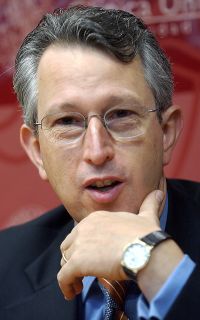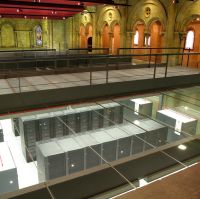

Science 
Scientific and technological research in Catalonia has made great contributions to human knowledge. Among many examples are Narcís Monturiol (1819 – 1885), inventor of the submarine, the astronomer Josep Comas i Solà (1868-1937), first director of the Fabra observatory in Barcelona and discoverer of several comets and asteroids, and the botanist Pius Font (1888-1964), who founded the botanical department at the Museu de Ciències Naturals in Barcelona. The driving force behind meteorology and climatology in Catalonia was Eduard Fontserè (1870-1970). Other leading figures were the geologist Jaume Almera (1845-1919) and the anatomist and surgeon Antoni de Gimbernat (1734-1816).
In the 20th century, Catalan culture produced ground-breakers who opened up new paths in research. These include the primatologist Jordi Sabater i Pi (1922), who introduced ethology to Spain and discovered the albino gorilla Floquet de Neu; and Ramon Margalef (1919 – 2004), the pioneer of ecology in Catalonia and one of the most important world specialists in the subject.
In the field of medicine we must mention Josep Trueta (1897-1977), who developed a way of combating bone infections that was applied for the first time in the Civil War and sadly needed again during World War II, when it saved thousands of lives. Francesc Duran i Reynals (1899-1958), a father-figure of virology and oncology, did his work in the USA, as did David Cardús (1922-2003), who studied the effects on the body of zero gravity or gravity less than the Earth’s, as a result of which he was one of the scientists who took part in selecting the first US astronauts. Also involved with NASA was biochemist Joan Oró (1923-2004), founder and first director of the Department of Biochemical and Biophysical Science of the University of Houston (USA), who carried out various studies seeking to understand the origin of life on Earth.
Another famous name in medicine is that of the ophthalmologist Josep Antoni Barraquer (1852-1924), who invented several surgical techniques, including a method of removing cataracts. He founded a dynasty of ophthalmologists which has now reached its fourth generation. At the present time, the Barraquer Ophthalmology Centre in Barcelona is a leader in specialisation and ongoing research in this branch of medicine. A key name in the field of urology is Antoni Puigvert (1905- 1990). Since it was founded in 1961, the Fundació Puigvert has been a place of research and study for urologists from all over the world. An outstanding figure in plastic surgery is Pere Gabarró (1899-1980), who introduced it to Catalonia. He did his work in England, where he went into exile after the Civil War. One of his achievements was to develop a new technique of tissue-grafting, known as the checker-board. Fernando Vidal López (1943 -1998) was famous for the treatment of pain. His contributions to the progress of anaesthesiology centred on the re-introduction of locoregional anaesthesia and its application in the field of pain treatment, leading to the creation of the present-day pain clinics. He was head of a Department of Anaesthesiawhere which he set up a teaching practice anddeveloped interesting lines of research in his field.
Today, internationally recognised Catalan doctors include Valentí Fuster (1943), who directs the Cardiovascular Institute in Mount Sinai Hospital in New York and has revolutionised the study of cardiology, and oncologist Joan Massagué (1953). Another name that stands out is that of Santiago Dexeus (1935), specialist in obstetrics and gynaecology and founder and director of the Institute that bears his name, now one of the most firmly-established centres for reproductive medicine. His team includes, among others, Anna Veiga, who participated in the birth of the first test tube baby in Spain is and now the director of Stem-Cell Bank at the Centre for Regenerative Medicine in Barcelona.
As regards scientific facilities, one of the most outstanding projects is the construction of a synchrotron (electron accelerator) in Cerdanyola del Vallès (Barcelona), which will be the only one of its kind in the south of Europe. Also worthy of mention is the Barcelona Biomedical Research Park which opened in 2006.






